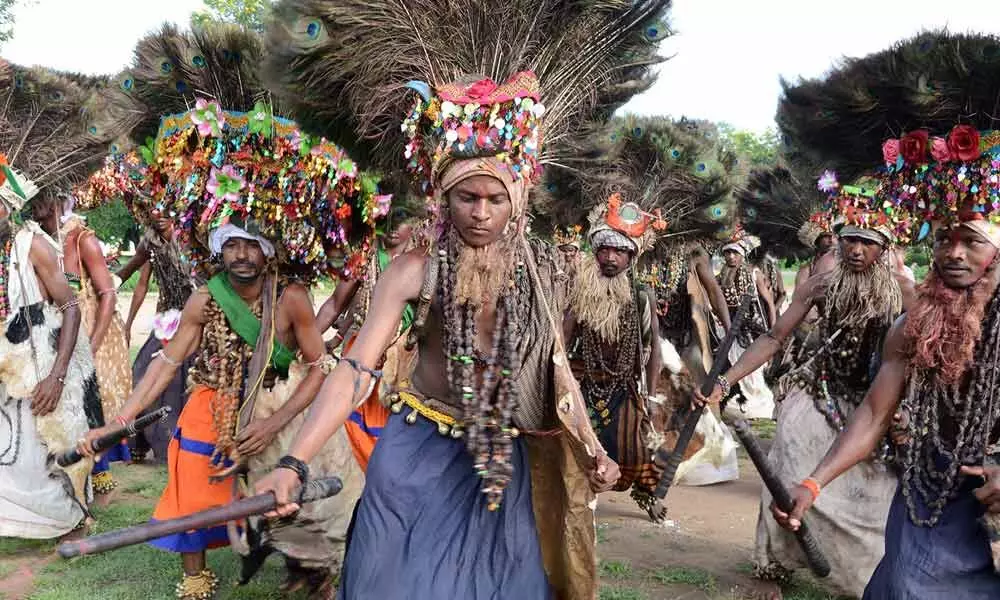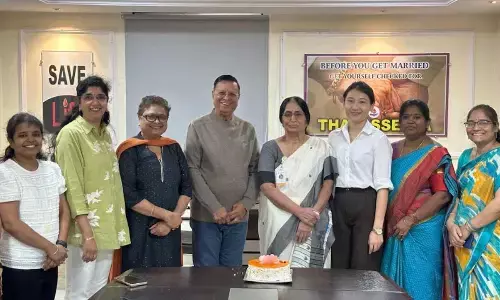Tribals leading wretched lives in Telangana

Tribals leading wretched lives in Telangana
Thousands of Gothi koya tribals who have fled from Bastar region in Chhattisgarh to the adjoining Telangana State during 2005-2006 due to State-Naxal conflicts, are strongly demanding for recognition of forest rights under the Recognition of Forest Rights Act 2006.
Thousands of Gothi koya tribals who have fled from Bastar region in Chhattisgarh to the adjoining Telangana State during 2005-2006 due to State-Naxal conflicts, are strongly demanding for recognition of forest rights under the Recognition of Forest Rights Act 2006. Both the States of Chhattisgarh and Telangana have failed to provide a solution to end the problem.
Surveys on these internally displaced people (IDPs) estimate nearly 20,000 in Telangana State and around 5,000 in the residuary Andhra Pradesh. These IDPs in Telangana State mostly concentrated in Bhadradri Kothagudem district, are pegged at around 12 thousand. Similar migrant settlements are also found in districts including Jaishankar Bhupalpally District. All these tribal people are locally called as Gothi /Gotti Koyas. They have settled mostly in the forest areas of Telangana.
The successive governments did not recognise their habitations as revenue or forest villages. As per the government records, their settlements are not existing. They are facing constant threat of eviction from their settlements by forest officials. However, several Gothi Koyas households living in the forest settlements are accessing the socio-economic benefits from the State Governments and accessing the welfare entitlements from the nearby main Gram Panchayat village.
ST Status questionable
The Scheduled Tribes and Other Traditional Forest Dwellers (Recognition of Forest Rights) Act, 2006 is enacted to recognise and vest the forest rights and occupation in forest land in forest dwelling scheduled tribes and other traditional forest dwellers. They are not eligible to claim forest rights under Forest Rights Recognition Act 2006 because they are not from any area in Andhra or Telangana, and they are not notified as STs in these two states. The IDPs are notified only STs in Chhattisgarh State.
The State list of STs recognises STs with respect to that state or areas within that State as per the Article 342 of Indian Constitution. However, these IDPs form part of the general population in Andhra and Telangana and are issued Voter ID Cards, Aadhaar cards, etc. They will have to be included newly as an ST to the prevailing ST list of AP / Telangana by a Presidential notification under Article 342 in order to become eligible as STs to become eligible to enjoy the benefits and rights as are available for STs in a Scheduled Area.
The Ministry of Home Affairs (MoHA), Government of India in 1984 clarified that a ST person of the State of Origin will be entitled to the benefits of reservation only in their State of Origin, and not in the State to which she/he has migrated. The same is the clarification of Ministry of Tribal Affairs, Government of India in Feb 1985 and which has been further reiterated by the Ministry of Social Justice and Empowerment, GoI in the case of migrant ST persons seeking education, employment benefits etc.,
The Supreme Court in Marri Chandra Shekhar Rao case in 1990 held that in view of the expression "in relation to that State", occurring in Articles 341 and 342, the benefit due to the Scheduled Castes or Scheduled Tribes would be available only in the State where the person is a member in the Caste or Tribe that is notified in the State.
Though the displaced Gothi Koyas are considered as non STs in Andhra and Telangana, and they are in occupation of forest lands prior to the prescribed cut-off date 13th December 2005, they still cannot seek individual forest land pattas over the forest lands in the Scheduled Area of Telangana/ AP. They do not fulfil the criteria that is required as Other Traditional Forest Dweller (OTFD) category. They and their ancestors have not lived in the region for three generations, i.e prior to 1930.
Further, in addition, even if eligible to claim rights (which they are not), the State is prohibited to recognise the rights of non-tribals on the Government lands in the Scheduled Area in view of the Land Transfer Regulations 1 of 70 which prohibits the transfer of lands in favour of non-tribals.
To overcome the difficulties and inconsistences in the law the Chhattisgarh Government has to take initiative to provide protection, and to rehabilitate and resettle them in their original place of residence in Chhattisgarh or in alternate place of their choice in Chhattisgarh as the case may be.
For those who do not wish to be rehabilitated and resettled in Chhattisgarh but opt to continue residing in AP and Telangana as the case may be, the AP and Telangana governments will have to prepare a special Rehabilitation and Resettlement programme for them outside the Scheduled Area where they can also be given land. Ministry of Tribal Affairs may be approached to provide assistance for such an R & R programme with funds from the Consolidated Fund of India.
Alternatively, the States of Andhra Pradesh and Telangana may send proposals to the Union Government to recognise such people who are STs in Chhattisgarh but are not in AP and Telangana due to area restriction. This would enable those who do not wish to be repatriated to Chhattisgarh to be notified STs in the area they currently reside in order to ensure that they become eligible to hold land so that they become eligible claimants under Forest Rights Act 2006 and government can allocate land in the Scheduled Area and provide other benefits that they, as STs now, are legally eligible to obtain.

















